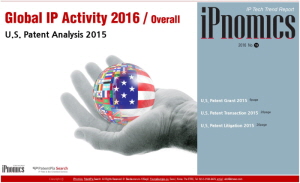Share the post "POSTECH Develops Surface Control Technology That Mimics Lotus Effect"
Pohang University of Science & Technology (POSTECH) has developed a technology that allows materials not to get wet even when they are underwater by using ‘lotus leaf effect technology’.
National Research Foundation of Korea (Chairman Cho Moo-jae) announced on the 21st that a research team led by Professor Yong Ki-joong of POSTECH’s Chemical Engineering Department combined lotus effect with artificial photosynthesis technology and has developed a surface control technology that greatly strengthens super-hydrophobic characteristic of a material.
Lotus effect technology is a technology that mimics lotus leaf’s water repellency. Surface of a lotus leaf is covered with micrometer-sized papillae. Papillae greatly reduces amount of areas that touches water and causes ‘interfacial air layer’ that exists between water droplets and surface.
Lotus effect technology also forms small poles on surface and implements super-hydrophobic characteristic. However it was limited to losing this characteristic when surface was exposed to water for long period of time as there was ‘underwater instability’ phenomenon where interfacial air layer that is on surface continuously dissolves in water.

A research team led by Professor Yong Ki-joong of POSTECH’s Chemical Engineering Department has developed a technology that maximizes super-hydrophobic property by improving ‘lotus effect’.
Research team has allowed surface to maintain super-hydrophobic characteristic for long period of time even when it is underwater by using a method that directly produces air layer on top of surface of a material through optical catalyst. Research team has formed micrometer-sized optical catalyst pole structures on top of surface of a material and formed nanowire on top of them.
This structure receives light and reduces surrounding water into air layers of hydrogen and oxygen. This is identical to principle of photosynthesis. These air layers then maintain on top of surface for long period of time while nanowires, which are optimally designed, effectively collects air layers. Research team already confirmed stable super-hydrophobic characteristic during tests that involve variety of materials such as silicon micro pole and zinc oxide nanowire.
Research team is predicting that this technology can greatly reduce cost to conserve variety of materials as it can greatly reduce damage that can occur on certain material by reducing contamination level on surface. This technology can be applied to ship that is exposed to water for long time and electronic clothing.
“We have developed a technology that allows surface not to get wet for long period of time even when it is underwater or exposed to rain.” said Professor Yong Ki-joong. “It can be utilized as a technology that allows materials or devices that are easily exposed to water to be used for much longer.”
Staff Reporter Kim, Youngjoon | [email protected]
Share the post "POSTECH Develops Surface Control Technology That Mimics Lotus Effect"

